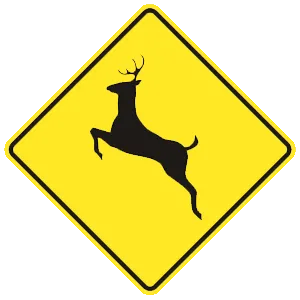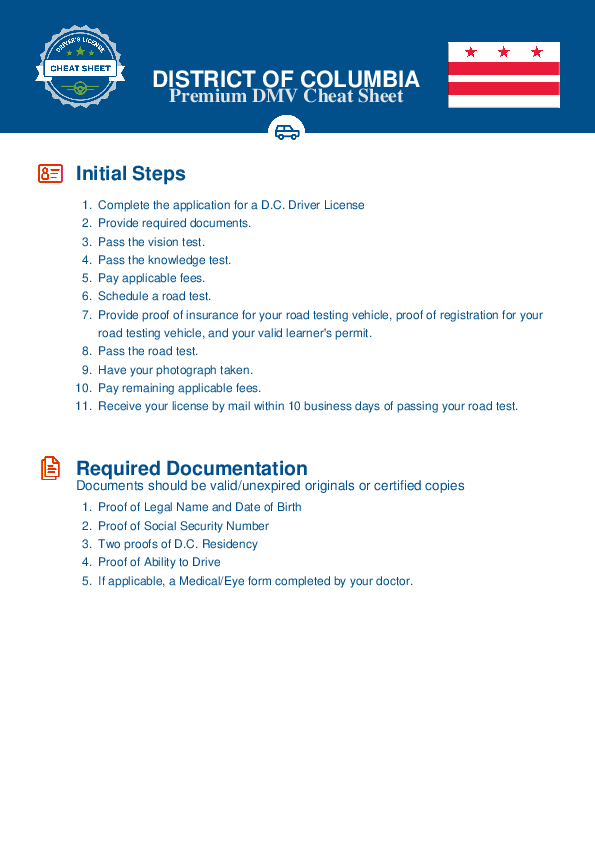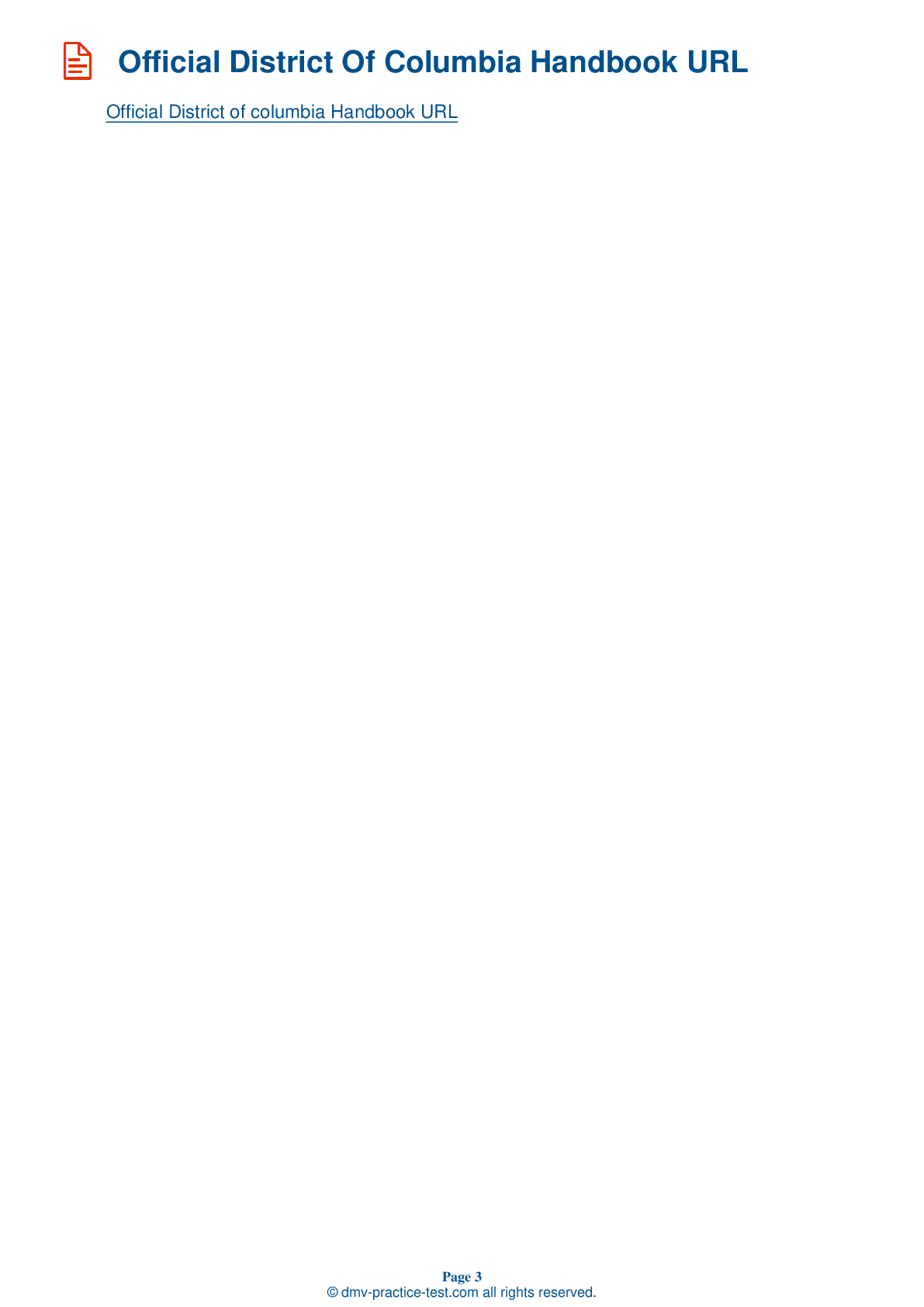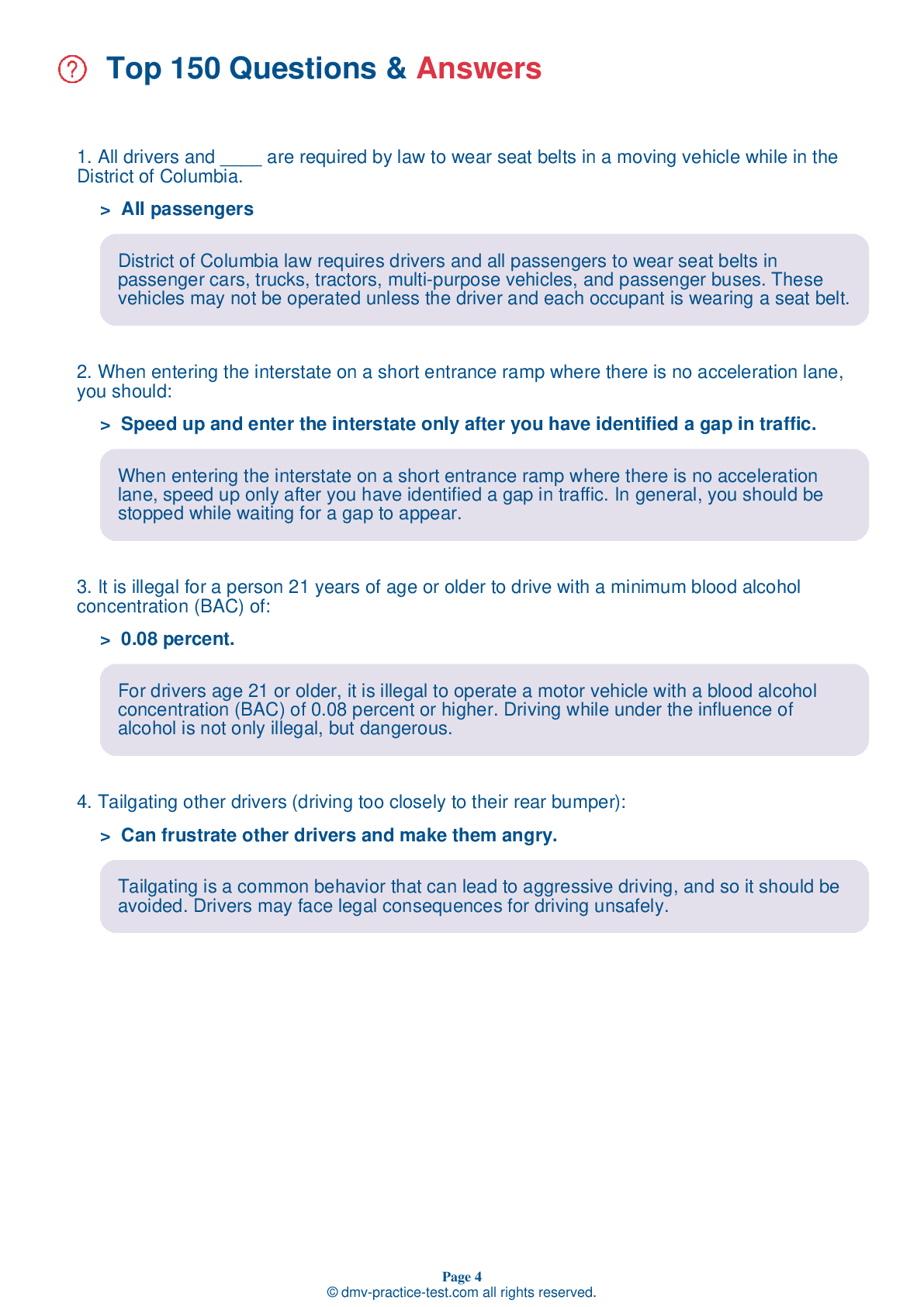FREE District Of Columbia DMV Practice Test #6
This set of District Of Columbia DMV practise tests was been updated for January 2025. It includes questions based on the District Of Columbia Driver Handbook's most significant traffic signs and laws for 2025. Use actual questions that are very similar (often identical!) to the DMV driving permit test and driver's licence exam to study for the DMV driving permit test and driver's licence exam.
On the practise exam, each question gets a tip and explanation to help you remember the concepts. The written component of the official DMV test will include questions about traffic rules, traffic signs, and driving statutes, as well as information from the Driver Handbook.
To achieve the required passing grade, you must correctly answer 20 of the 25 questions. Take our DMV practise exam to help you prepare for your District Of Columbia instruction permit or driver's licence.
The DMV exam is available in several languages.
Using any form of testing help will result in an automatic fail, and the DMV may take further action against your driver's licence, so avoid it.
1 . When approaching a school bus stopped with its stop arm extended, drivers should:
When approaching a stopped school bus that is using its stop signal, a driver is required to come to a complete stop. They should not proceed until the stop arm is withdrawn.
2 . This road sign means:

This sign warns that deer cross the roadway in the area. You should slow down, be alert, and be ready to stop.
3 . Seat belts are most effective when they are worn by:
When you drive, make sure each person in your vehicle wears a seat belt. In the event of a crash, a person without a seat belt becomes a flying object and a danger to each person in the vehicle.
4 . Distracted driving may be caused by:
It is estimated that drivers make 200 decisions for every mile traveled, making it vital that drivers focus their full attention on the task of driving. Performing any additional task can create a dangerous distraction.
5 . When approaching a traffic signal displaying a steady yellow arrow, drivers:
A steady yellow arrow indicates that a red arrow is about to appear. Stop unless you are already within the intersection.
6 . This road sign means:




